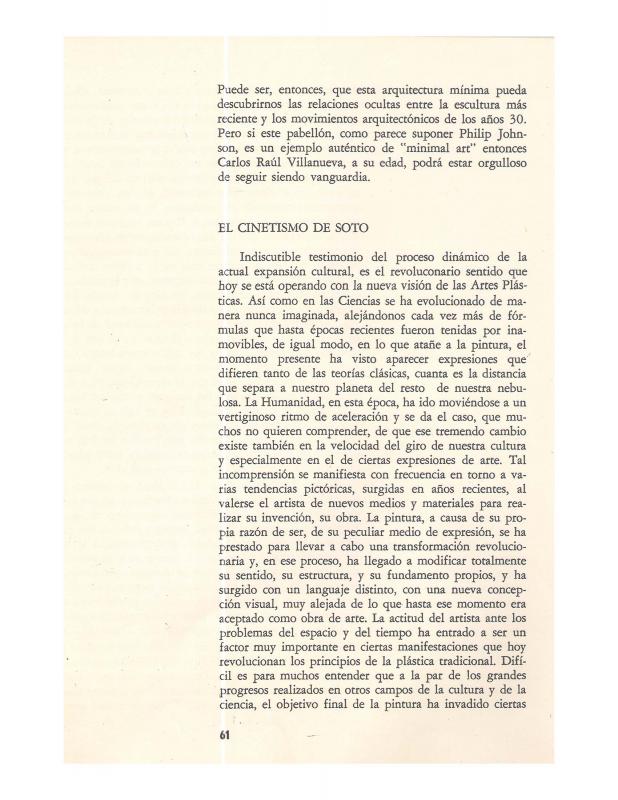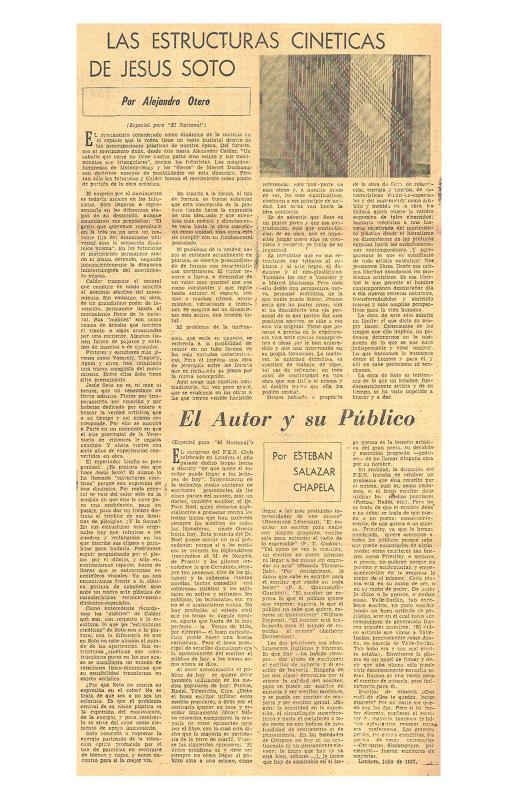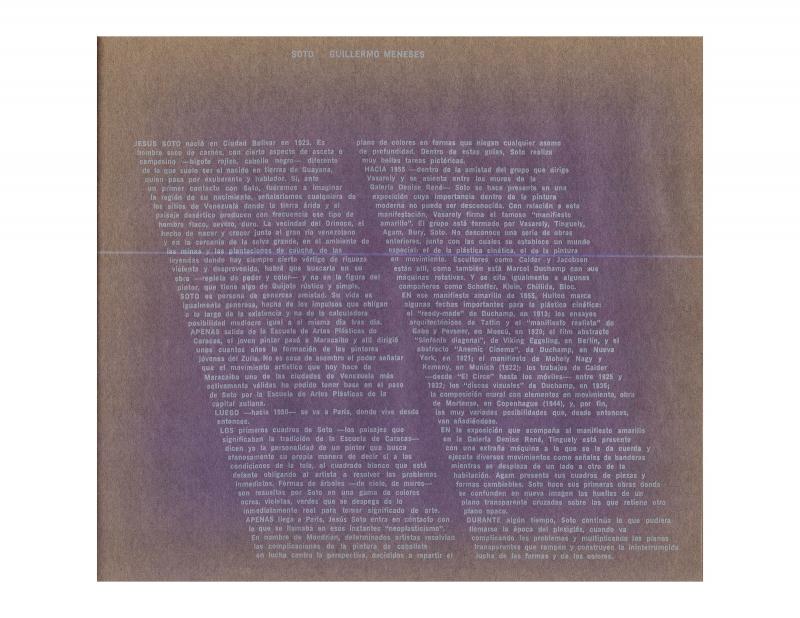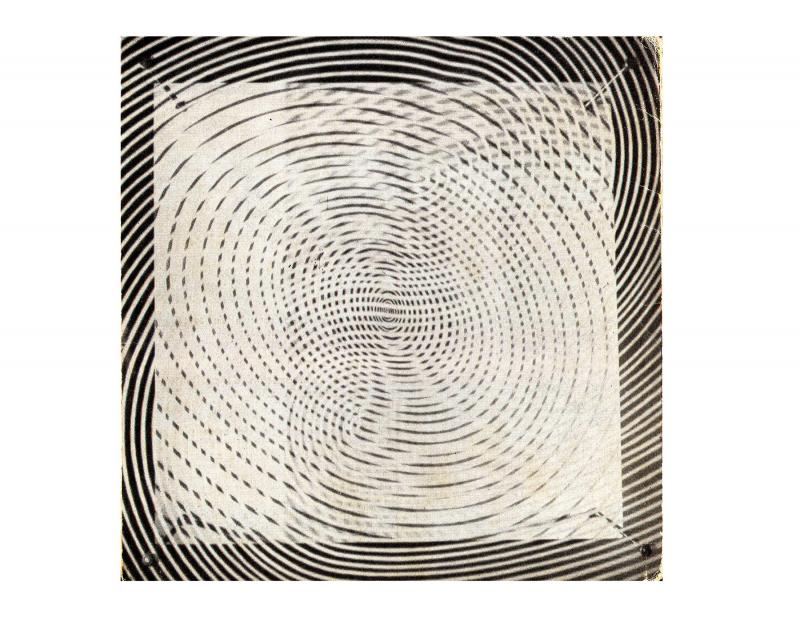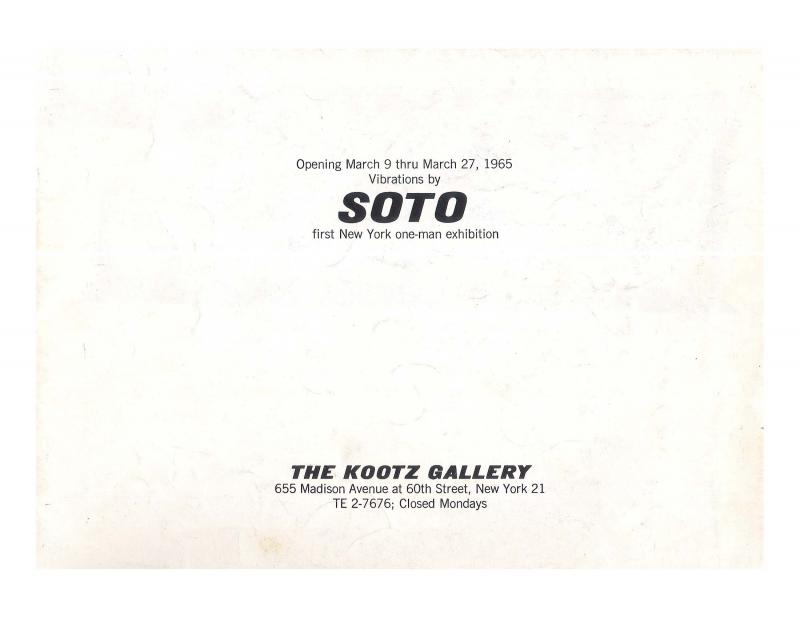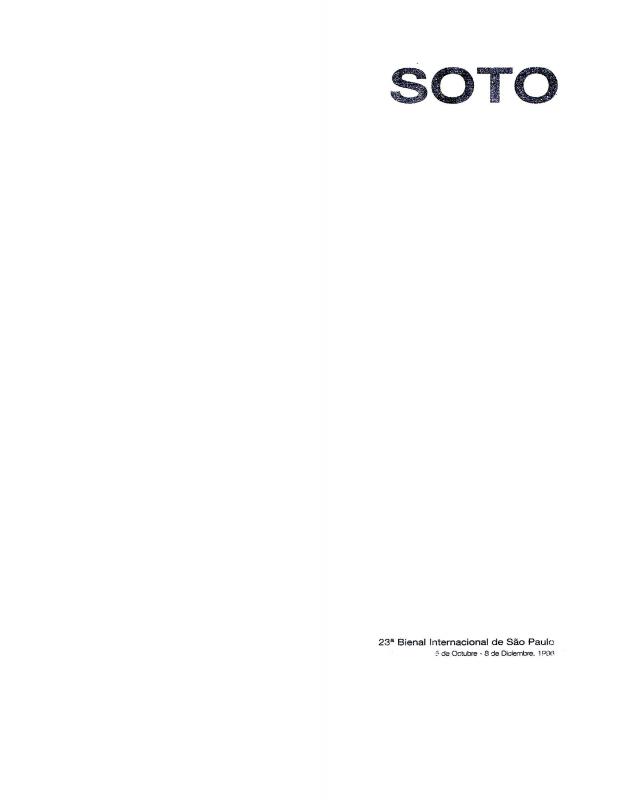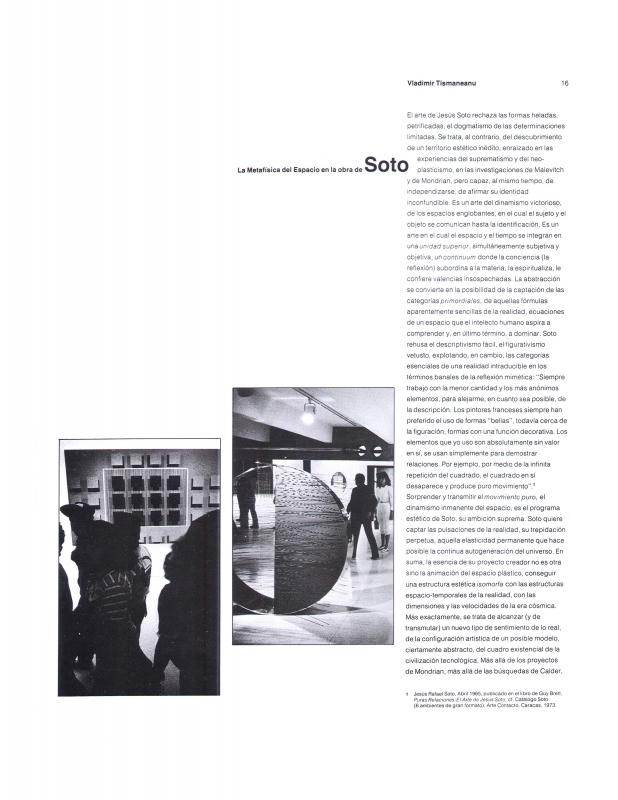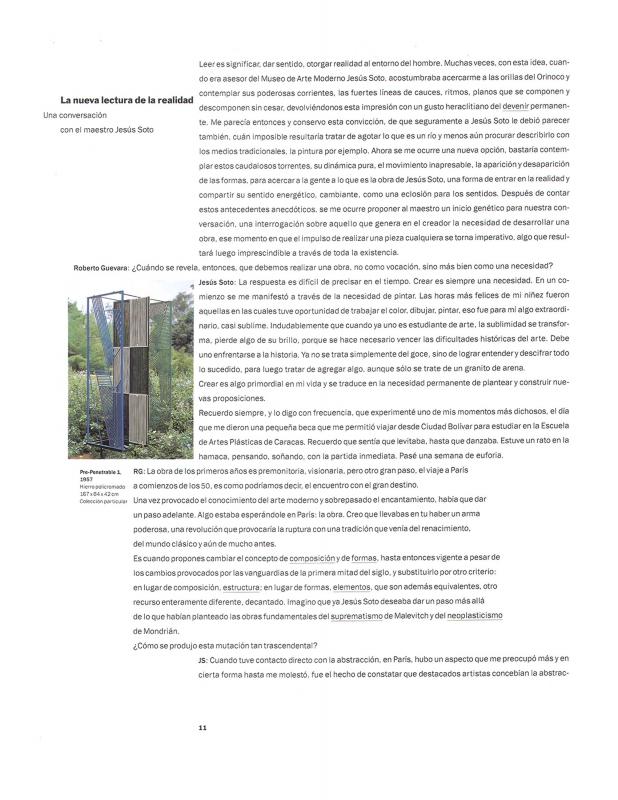This lengthy piece by the Venezuelan historian, photographer, and art critic Alfredo Boulton (1908–95) was originally published in the catalogue for Soto, the exhibition held at the Museo de Bellas Artes de Caracas in July–August 1971. A revised version of the text would subsequently be used as the basis for the book with the same name, Soto (1973). This long and complex piece is one of the most thorough essays ever written about Jesús Rafael Soto (1923–2005) because—in addition to providing a detailed review of his work, thinking, and philosophy—it places him within the context of contemporary abstract art, and includes an extensive analysis of the environment in which he worked. Boulton lists all the movements and artists that influenced Soto and his work. He also interprets and fleshes out many of the important concepts that Soto developed and pursued in his work; concepts that had not yet been studied and that laid the essential foundations for his conceptual approach. The incessant search for pure abstraction (free of any trace of figurative influence) is a constant in Soto’s artistic thinking, and his work always develops along those lines, introducing new mechanisms such as optical vibration, the dynamics of the subject matter, and the physical-dynamic relationships between the components of the work. According to Boulton, the Venezuelan Kinetic artist, who lived in Paris, was more interested in the relationships between the components than in the components themselves. In projects of this kind, the viewer’s involvement is of critical importance, since the viewer and the work create a symbiotic relationship, and many of the relationships created between the components can only be appreciated when the viewer is present. This is especially true in the case of Soto’s Penetrables series.
For other articles about Soto, see by Alfredo Boulton “El cinetismo de Soto” [doc. no. 1069749]; the essay by Ariel Jiménez “Jesus Soto: Lo visible y lo posible” [doc. no. 1073684]; the article by Alejandro Otero “Las estructuras cinéticas de Jesús Soto” [doc. no. 850667]; the article by Guillermo Meneses “Soto” [doc. no. 1080690]; the one by various authors titled “Soto: Estructuras cinéticas” [doc. no. 1059619]; the text by Umbro Apollonio “(Untitled) [in the catalogue “Vibrations by Soto” at The Kootz Gallery 1965]” [doc. no. 1069781]; the article by Roberto Guevara “La energía como realidad” [doc. no. 1102332]; the text by Vladimir Tismaneanu “La metafísica del espacio en la obra de Soto” [doc. no. 1101524]; and the interview by Roberto Guevara “La nueva lectura de la realidad: Una conversación con el maestro Jesús Soto” [doc. no. 1059731].

